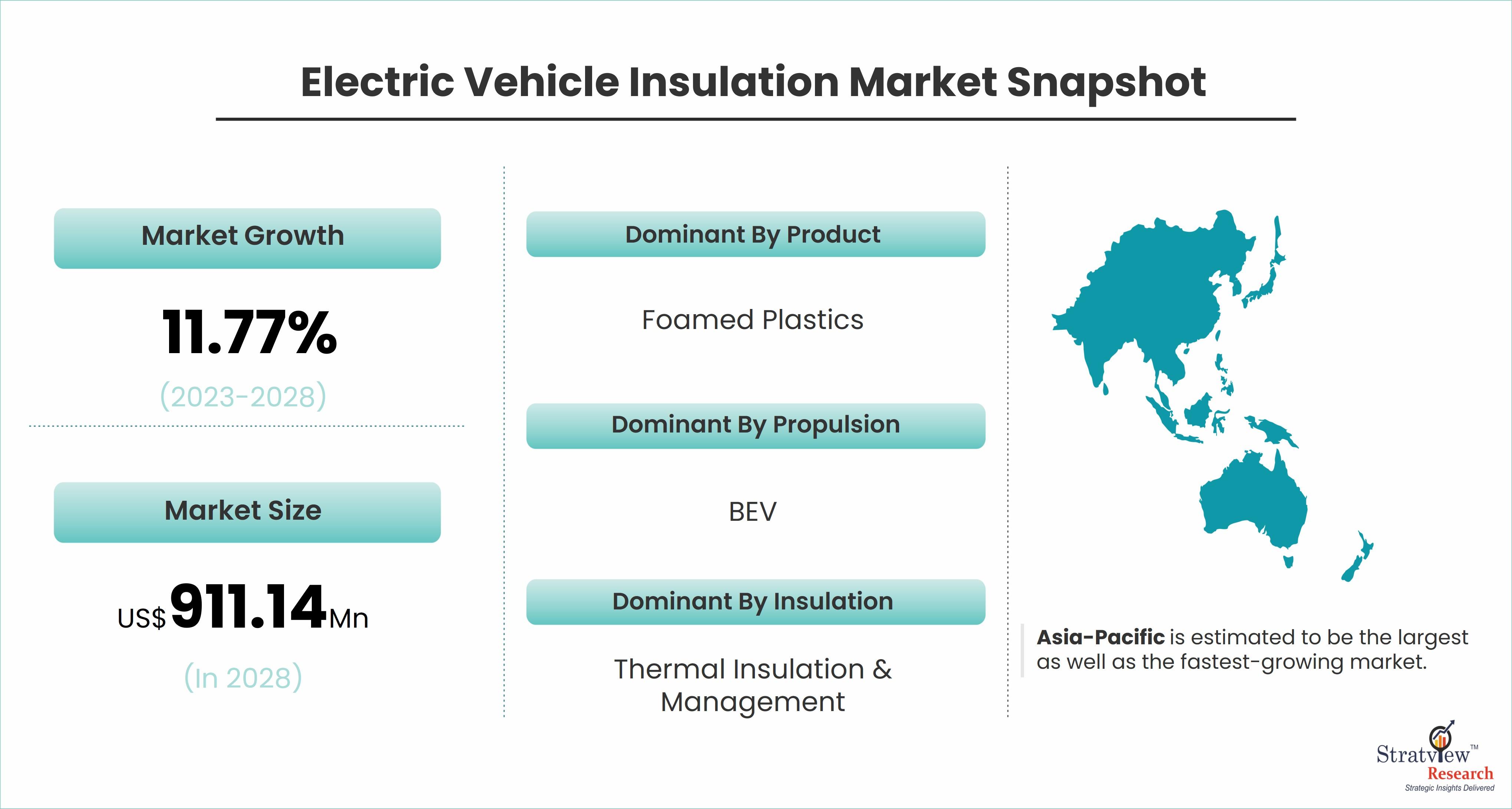The global electric vehicle (EV) insulation market is experiencing significant growth, driven by the rising adoption of EVs, technological advancements in battery systems, and the need for efficient thermal management. Insulation plays a crucial role in enhancing the safety, performance, and efficiency of electric vehicles by managing heat, reducing noise, and protecting sensitive components. As the demand for EVs continues to surge, understanding the key dynamics of the electric vehicle insulation market becomes essential for industry stakeholders.
According to Stratview Research, the electric vehicle insulation market was estimated at USD 463.3 million in 2022 and is likely to grow at a CAGR of 11.77% during 2023-2028 to reach USD 911.14 million in 2028.
Key Market Drivers
The major factors driving the growth of the electric vehicle insulation market are-
- Increasing demand for electric vehicles: According to International Energy Agency (eia.org), the Zero-Emission Government Fleet Declaration, signed in September 2022, aims to reach 100% zero-emission cars and vans in government fleets, with an additional aspiration of 100% zero-emission trucks and buses acquisitions, by no later than 2035. Apart from this, the global electric vehicle fleet is also growing. Since vehicle insulation helps improve vehicle lifespan, with the growing fleet, the demand for electric vehicle insulation is also expected to grow.
- Government regulations and incentives – Governments across the globe are promoting the adoption of EVs as a part of their efforts to reduce greenhouse gas emissions. To encourage consumers, governments are offering various incentives such as tax credits, subsidies, grants for EV purchases, and more. With such policies, there is a growing demand for EVs and to meet the demand, manufacturers are raising demand for electric vehicle insulation.
- Cost reduction in batteries – The cost of lithium-ion batteries, one of the crucial components of electric vehicles, has been steadily decreasing over the years. Owing to this reduced cost, there is a significant popularity of EVs. As vehicles become affordable and more economical, the demand for insulation solutions increases.
- Rising consumer awareness –Consumers are increasingly seeking eco-friendly ways of transportation, and EVs are driving consumer interest. EIA estimates that 18% of new cars sold in 2023 will be electric. The growth in electric vehicle insulation is directly linked to the growth of electric vehicle manufacturing. The more consumers demand EVs, the more the electric vehicle insulation market will grow.
Challenges in the Market
- High Costs of Advanced Insulation Materials
While the demand for innovative insulation solutions is rising, the high cost of advanced materials such as aerogels and thermal foams can be a barrier for automakers, especially in the mid-range and budget EV segments. Balancing cost-effectiveness with performance is a key challenge that insulation manufacturers must address to capture a broader market share.
- Supply Chain Disruptions
The global supply chain disruptions, particularly in raw materials, pose challenges to the consistent availability and pricing of insulation materials. Ensuring a reliable supply chain is critical for maintaining market growth and meeting the rising demand for EV insulation.
Opportunities for Growth
- Expansion into Emerging Markets
Emerging markets in Asia-Pacific, Latin America, and Africa offer significant growth opportunities for the EV insulation market. The increasing adoption of EVs in these regions, driven by government incentives and a growing focus on green mobility, presents new avenues for market expansion.
- Focus on Sustainable and Lightweight Materials
The shift towards lightweight and sustainable insulation materials, such as bio-based foams and recycled composites, aligns with the broader industry trend of reducing vehicle weight and carbon footprint. This presents a unique opportunity for insulation manufacturers to innovate and meet the evolving needs of the EV market.
Conclusion
The global electric vehicle insulation market is poised for substantial growth, driven by the increasing adoption of EVs, technological advancements, and stringent safety standards. While challenges such as high material costs and supply chain disruptions persist, the focus on innovation and expansion into emerging markets provides significant opportunities for industry players. As the EV market continues to evolve, insulation will remain a critical component in enhancing vehicle safety, efficiency, and performance, shaping the future of electric mobility.


